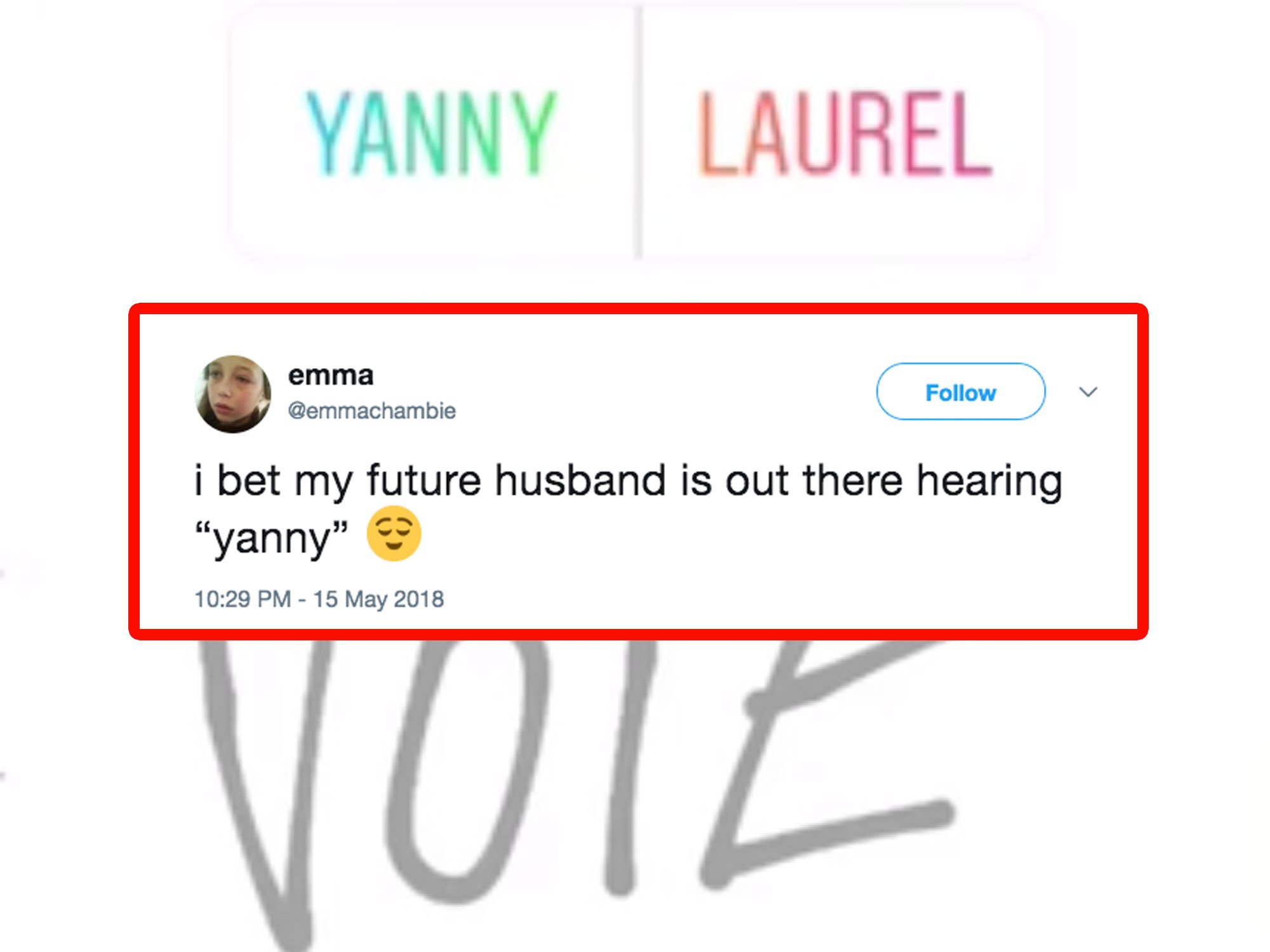Last week the Internet lost control, yet again, over a new meme. Once just a simple Instagram story, the question of if you hear “Laurel” or “Yanny” evolved into a heated debate covering multiple platforms of social media. This 10-second video became viral almost overnight, raising the question of what really makes one meme go viral?
Webster’s dictionary defines meme as “an idea, behavior, style, or usage that spreads from person to person within a culture” and viral as “quickly and widely spread or popularized especially by means of social media” but offers no further explanation behind the reasoning of viral memes.
For those who somehow avoided the “Laurel” versus “Yanny” storm last week, it derived from a simple audio clip that played one barely coherent word. The meme began with the realization that some heard the word “Yanny” and others would bet their lives on the fact that they heard “Laurel.”
In reality, the difference in sound dealt with two different frequencies playing in the clip — the higher frequency playing “Yanny” and the lower frequency playing “Laurel” — but the science behind the video did not stop the Internet.
From this one video emerged conflicts between friends, a slew of follow-up memes and even a video posted on the official White House YouTube asking the offices for their remarks. While, days later, the Internet has still yet to decide if “Yanny” or “Laurel” really won, almost all can agree that the White House’s involvement caused a good amount of second-hand embarrassment.
With the relatively new easy access to the Internet, viral memes became much more common. From grumpy cat to the ice bucket challenge to Kim Kardashian crying, viral memes evolved dramatically over the past years, although unknown if for better or for worse.
But with thousands of memes being posted on Twitter, Instagram and some even to the slightly outdated Facebook, what makes some of them rise to the top while the majority fade into the darkness to be forgotten about?
Some scientists argue that the evolution of memes can be found comparable to the evolution of humans. I know, this sounds ridiculous, but hear me out: Scientists argue that while memes clearly differ from humans, one can find the same idea of “only the strongest survive” on both sides. Since so many memes reach social media each day, only the strongest find the ability to go viral.
Memes only go viral when found easily relatable. When the content involves a joke or topic that involves everyone, more people find it funny and choose to share it with their friends, who then share it with their friends, and so on and so forth.
What do you hear?! Yanny or Laurel pic.twitter.com/jvHhCbMc8I
— Cloe Feldman (@CloeCouture) May 15, 2018
The “Yanny” versus “Laurel” debate reached popularity so fast because it related to everyone. It provided content that everyone developed their own opinion on, and everyone wanted to argue about. Some memes only reach certain demographics, which in turn holds them back from reaching such a high viral level. For a meme to truly go viral, it must reach a range of different demographics.
The advancement of technology and social media also plays an obvious role in the rise of the newfound meme generation. In the earlier years, chain emails held a similar effect to viral memes.
Remember those emails that would be forwarded to your 10 closest friends, or the ones where you were supposed to sign your name and pass it on? While not funny or relatable, chain emails could reach the same level of “going viral” that memes do today, but they could only reach that viral status on a much smaller level.
Nowadays, with the current level of social media access, instead of clicking forward on an email and sending it to your 20 closest friends, now you can retweet a meme and share it to millions with only one click.
The easy access to people all over the world creates an environment that allows for more viral images. This can especially be the case once a meme first hits the surface, as one moment it does not exist and the next it takes up your entire news feed.
it's so clearly laurel. I can't even figure out how one would hear yanny.
— chrissy teigen (@chrissyteigen) May 15, 2018
The trick behind this involves the people sharing these images and videos. One image shared between a friend group or even university will not necessarily reach viral status, but if a social media influencer gets their hands on it, that opens a whole new door.
Social media influencers can include any account or person that has enough followers on social media to create an influence on people, hence the name. For instance, if Chrissy Teigen tweets about something, it’s chances of going viral immediately skyrocket.
While the content of the meme affects the viral level to an extent, a big portion of a meme’s fame can be contributed to the people that advertise it. A couple hundred, or even thousand, retweets does not qualify as enough to make a meme go viral.
An influencer, on the other hand, can advertise the content to a much larger crowd with merely one click of a button. This changed social media, as the content itself plays a smaller part in something going viral. Now, it really just depends on who sees it and deems it good enough to be shared.
Increase in social media also connects the world in a way that it hasn’t in the past. Technology made it possible to contact people across the world in seconds. In a way, viral memes and social media connect the world, making it possible for people living on other continents to enjoy the same jokes and content.
Despite there being no concrete reason for why a meme goes viral, no one questions the reason behind viral memes. In the current social and political climate, turning on the news often means seeing many tragic and disturbing news stories.
Many seek social media to see content to distract them and make them laugh. Viral memes, no matter how irrelevant, somehow unite millions — something that nowadays can often be desperately needed.

















